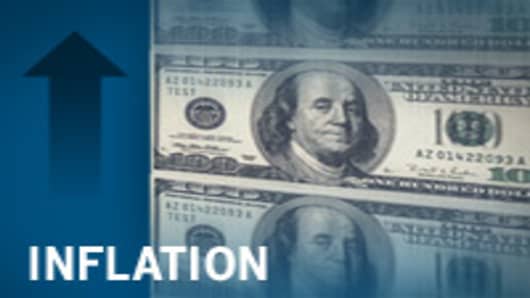Zandi currently expects overall CPI inflation to accelerate from 1.7 percent in 2010 to 2.4 percent in 2011, and then moderate in 2012 to 2.1 percent as oil and food prices stabilize. He sees core inflation, without food and energy, at 1.4 percent in 2011 and 2.1 percent in 2012, from less than 1 percent in 2010.
The markets have been watching this creeping trend of higher prices, which has been much more dramatic outside the U.S. but is now increasingly showing up inside the U.S. The Fed's easy monetary policy has been blamed in part for the weakening dollar and run-up in commodities prices around the globe, but the Fed does not yet see inflation as a problem and it just recently stopped seeing deflation as problem. Other central bankers do, however, and rates are expected to rise, even in Europe as early as next week.
The topic of Fed policy was top of mind in markets this week, and it was brought there by Fed officials themselves. A troop of Fed presidents, in the past week, have been on the speaking circuit, all weighing in on the merits of continuing with their quantitative easing program (QE). The QE program is scheduled to end in June, and was intended to involve the purchase of $600 billion in Treasury securities by the Fed. Those purchases in theory were expected to reflate assets, pushing investors into riskier assets, while keeping interest rates low.
Minneapolis Fed President Narayana Kocherlakota said Thursday that quantitative easing has boosted inflation expectations more than he had anticipated and that higher short-term rates are possible in late 2011.
Richmond Fed Presdient Jeffrey Lacker Thursday joined St. Louis Fed President James Bullardin suggesting the Fed should be able to back off from some of its bond buying, ahead of the scheduled end of the program.
"I think they were trying to prepare us for moving from stimulus to restraint. There's a fair amount of debate as to the timing and how aggressively they should tighten. I think it's appropriate for them to start this discussion now," said Mark Zandi of Moody's Economy.com.
Kansas City Fed President Thomas Hoenig is one of the Fed presidents who has been outspoken about the Fed's low rate and easy money policies and he was vocal again on Wednesday. Economists do not expect the Fed to adjust its near zero rate policy until sometime next year, and there is a low expectation that the quantitative easing program could be extended.
Fed Chairman Ben Bernanke has said global demand is helping fuel commodities prices, but Hoenig blamed the Fed and other central banks.
"While some of the increase may reflect global supply and demand conditions, at least some of the increase is driven by highly accommodative monetary polices in the United States and other economies," said Hoenig.
Questions? Comments? Email us at marketinsider@cnbc.com



